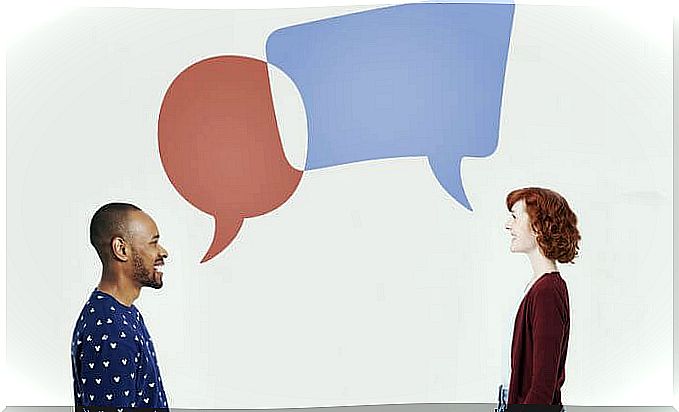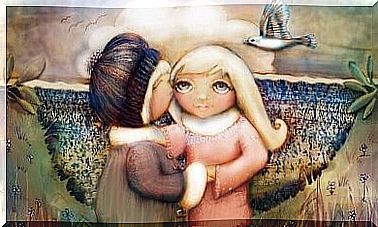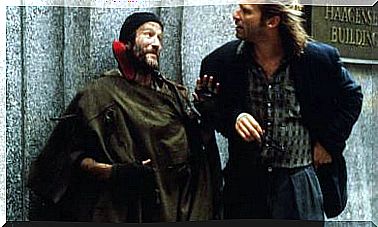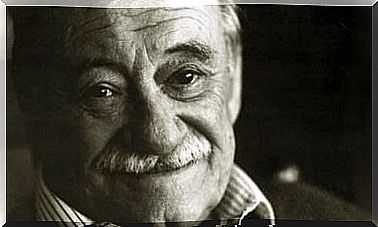Communicative Intelligence: The Art Of Making Yourself Understood And Moving

Communicative intelligence can transform our reality and the quality of our relationships. It does so by allowing us to create contexts of trust in which to reach agreements, in which to speak fluently, ask powerful questions that impact the other, express ourselves effectively and create positive changes. All of these are, without a doubt, skills that we would love to be able to master.
Most of us communicate with multiple people throughout the day. Now there are times when we can get frustrated during our conversations. This happens, especially, when those misunderstandings arise that create distances and meaningless discussions. These are situations in which the original message is distorted or simply lost along the way.
After a while, we see ourselves saying “I’m sorry, I didn’t mean exactly that, you misunderstood me . ” They are very common experiences in which, without a doubt, we are missing some resource, some strategy with which to avoid these communicative experiences. Likewise, we cannot rule out an obvious reality either: it is quite possible that the other party did not listen to us as we deserved.
Something that we see frequently is that not only do we not know how to communicate effectively, the most problematic thing is that we also do not know how to listen. This is how the flow of language and empathic dialogue is broken and hindered.
It is therefore recommended that we take a step forward, that we dare to master an exceptional tool with which we can all win: communicative intelligence.

Communicative intelligence, what does it consist of?
One of the best references in communicative or conversational intelligence was the organizational anthropologist and professor at the University of Harvad Judith E. Glaser. His works, his research and lectures given around the world on this subject have taught us several things. The first is that this competence is learned and is within our reach.
It would basically be about training our brain and emotions in the art of conversation, in that communication that starts from internal calm and the express desire to reach the other.
According to Dr. Glaser, success in life is achieved when we master this skill because this type of intelligence goes beyond the act of communication. It implies, among other things, empowering ourselves in emotional control, empathy, problem solving, integrity and respect for the other …
Communicating well is thinking well, it is knowing how to rearrange ideas, transform mental complexity into easy and interesting messages to transmit. Being skillful in the exercise of conversation is, above all, being able to understand our interlocutor. There is the magic and there is the authentic mechanism of communicative intelligence.
Let’s see more features of this dimension.
A type of intelligence that transcends beyond the “I”
Communicative intelligence goes beyond oneself. While conventional intelligence starts from one’s own ability to understand, learn, reason, remember, etc., conversational ability focuses on the other, who is in front of us.
Likewise, there is another fact that defines it: communicating is not only transmitting ideas, judgments or making whoever is in front of me convinced of what I take for granted. Is much more. Among its objectives are the following proposals:
- Allow us to connect with other people’s perspectives, without judgment, without preconceived ideas.
- Ask more than talk and ask questions that create impact, that pique interest.
- Know how to listen actively.
- Attend to both verbal and non-verbal language.
- Know how to express opinions in an appropriate and timely manner.
- Guide our conversations to know how to reach common ground and then create real changes where we all advance or win.
- Take down the need to always be right in conversation and be able to learn from each other.
- Make emotions our allies. To excite the other so that our dialogue is more enriching.

Learn to be a mirror and a window at the same time
In the art of communication it is essential to learn to be a mirror and a window at the same time. What does this mean? It is being skillful at connecting with whoever is in front of us and being their mirror.
It is to make the other person feel reflected in us before what we say … because we do it through empathy. Be close so that they feel connected to us because we seem familiar to them.
However, we must also be windows: figures capable of inspiring and opening new perspectives for them. Communicative intelligence is the art of connection and expansion, of knowing how to reach the heart of the other, but at the same time growing together by learning from each other.
Communicative intelligence starts from trust
If we want to reach agreements or if we want to have a real impact on an audience or a specific number of people, we must be able to transmit trust.
This dimension is the true psychic sinew between all of us. Confidence, after all, impacts our brain by releasing oxytocin, the hormone of human connection.
If you inspire confidence, you will have half earned territory. If you express yourself clearly, simply and closely, the other person will be receptive to every message and idea you convey. Relationships as a couple, work, family …
To conclude, great leaders, managers, and skill coaches know the importance of this type of competition. We are facing a valuable resource that can contribute to our fulfillment. Let’s work on it.









